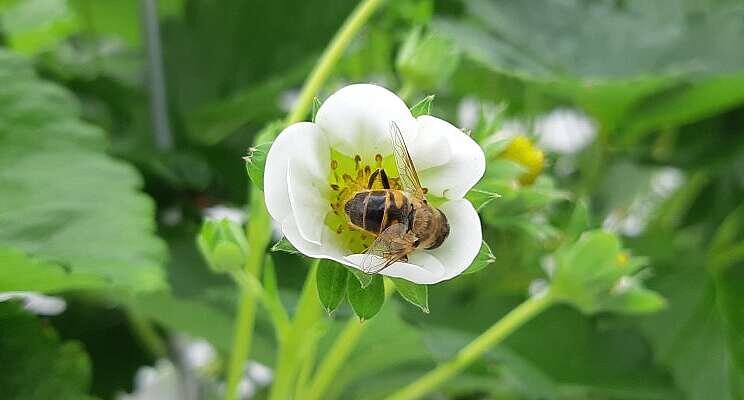Hoverflies help bumblebees and honey bees pollinate soft fruit
Added on 19 October 2021

Some hoverflies are very suitable for pollinating: they feed on the pollen of the flowers. For other species, the pollination is a side effect of their search for aphids. The insects are commercially available and can be added by the grower.
If they are released into the greenhouse, the hoverflies must be given the opportunity to live as long as possible, and thus to pollinate as many flowers as possible with as few introductions as possible. That depends on a number of things. First of all, the occurring of other flowering plants. A greenhouse with only strawberries is too one-sided for the pollinators. The WUR is therefore investigating whether adding plants - such as fast-growing buckwheat - has an positive effect on the hoverfly population.
Influence of LED lighting on flight behaviour
In addition, it is also being investigated which light spectrum of LED lighting ensures that flying insects can continue with foraging behaviour. Insects such as bumblebees and bees are bothered by the red light: they don't perceive it. However, this light is very important for growing crops. The research examines the extent to which bees, bumblebees and hoverflies are influenced by the light spectrum.
The research into the use of hoverflies for pollinating soft fruit is financed by the Eureka Eurostars programme, De Topsector Tuinbouw & Uitgangsmaterialen and the companies Biobest and Polyfly. The Greenhouse as an Energy Source program finances research into behavior under LED lighting.?
Read more on Wageningen University & Research
Photo Courtesy of Wageningen University & Research
Source: Wageningen University & Research
More news















